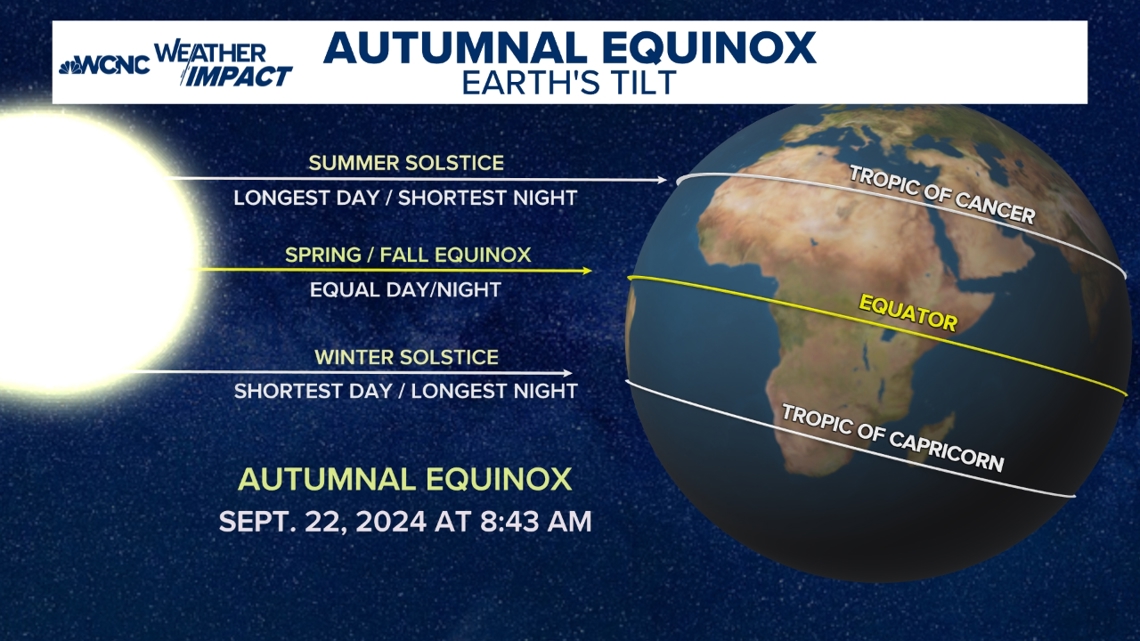CHARLOTTE, N.C. — Days are gradually becoming shorter here in the Northern Hemisphere as we move closer to the autumnal equinox on Sept. 22 at 8:43 a.m.
Here’s a breakdown of earlier sunset times as we transition from summer to fall:
Tonight, Aug. 26 – 7:58 p.m.
Sept. 26 – 7:13 p.m.
Oct. 26 – 6:34 p.m.
Nov. 3 – Set clocks back one hour
Nov. 26 – 5:12 p.m.
This change in the length of daylight hours is due to the tilt of the Earth's axis and its orbit around the Sun resulting in earlier evenings.
The tilt of the Earth's axis is one of the main reasons for the changing seasons and the variation in daylight hours throughout the year. In other words, different parts of the planet receive varying amounts of sunlight at different times of the year.


For instance, during the summer months in the Northern Hemisphere, the North Pole is tilted toward the sun, leading to longer days and shorter nights.
As we move towards the autumnal equinox, the tilt of the Earth causes the North Pole to start tilting away from the sun, which means shorter days and longer nights.
This gradual change in the position of the Earth relative to the sun is what causes the days to become shorter throughout the fall season.


As the transition from summer to fall occurs, Charlotte and other locations in the Northern Hemisphere will start to experience the impacts of our weather daily.
Here are some impacts of earlier sunsets:
Shorter Days
- With the axis tilting away from the sun, days become shorter as there are fewer hours of daylight
Decreasing Sun Angle
- The sun's angle in the sky becomes lower, which means less direct sunlight reaching the Earth's surface. The tilt decreases the amount of solar radiation.
Hanging Weather Pattern
- The shift brings cooler temperatures, drier air, and the potential for more frequent and impactful cold fronts and changing wind patterns.
The angle of tilt of the Earth's axis remains constant at approximately 23.5 degrees throughout the year.
During both the autumnal equinox and vernal equinox (spring), there’s equal day and night for both hemispheres. That’s because the Earth's axis is positioned so that neither the North Pole nor the South Pole is tilted towards the sun.
Contact KJ Jacobs at kjacobs3@wcnc.com and follow him on Facebook, X and Instagram.

